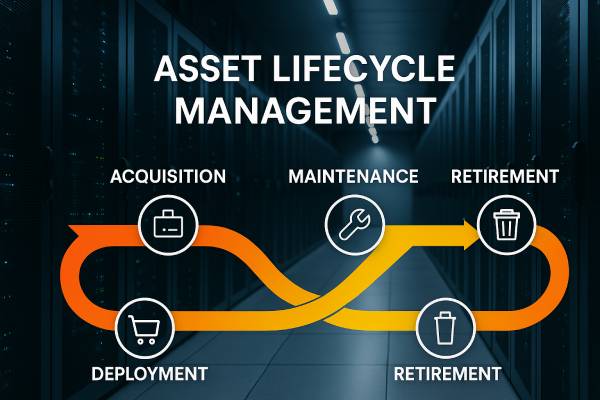Updated on July 16th, 2025
Today’s data center operators must effectively manage the convergence between Information Technology (IT) and Operational Technology (OT). This IT/OT convergence is essential for seamlessly integrating IoT devices and OT data with existing IT systems, ensuring efficient operation of mission-critical infrastructure. A clear understanding of both IT and OT is crucial for maintaining these complex environments.
Understanding IT and OT
Informational Technology (IT) focuses on electronic data management and IT systems. This includes software version control, vulnerability tracking, and cloud interactions, managed by IT professionals to ensure optimal productivity and information flow.
Operational Technology (OT) involves using hardware and software to monitor and control physical processes and critical infrastructure. These operations are integral to supporting infrastructure such as fire safety, plumbing, HVAC, and cooling systems.
Importance of IT/OT Convergence
The integration of IT and OT systems is increasingly vital as facilities become more digitized. Here are key reasons why this convergence is important:
Improved Efficiency
- Streamlined Operations: Converging IT and OT systems streamlines operations, reducing redundancy and improving overall efficiency.
- Reduced Downtime: Integrated systems enhance supervisory control, allowing issues to be identified and addressed quickly, minimizing downtime.
Enhanced Data Utilization
- Data Integration: IT/OT convergence promotes integration of operational data from various sources, offering comprehensive views of facility operations.
- Actionable Insights: Combined data streams provide actionable insights, aiding in predictive maintenance and informed decision-making.
The Need for a Single Source of Truth
Having a centralized platform, or a single source of truth, is vital for monitoring and managing this convergence effectively. Here’s why:
Consistency and Accuracy
- Unified Data Management Systems: A single source ensures all data is consistent and accurate, facilitating clearer communication and reporting.
- Elimination of Discrepancies: Centralized information helps eliminate discrepancies and data conflicts, enhancing business operations.
Simplified Compliance and Security
- Regulatory Standards Compliance: Centralized systems simplify compliance tracking with regulatory standards by maintaining comprehensive records.
- Enhanced Security Measures: A consolidated view of IT and OT enhances security, aiding in swift threat identification and mitigation of cybersecurity risks.
How MCIM Facilitates IT/OT Convergence
MCIM supports IT/OT convergence by providing a comprehensive platform that integrates workflow and operational intelligence. It offers real-time insights and predictive maintenance capabilities, streamlining operations and ensuring reliability.
Advantages of MCIM:
- Increased Reliability: Ensures robust operation of both IT and OT systems, reducing failure likelihood in industrial control systems.
- Cost Management and Risk Reduction: By eliminating the need for continuous customization, MCIM reduces operational costs and minimizes risks associated with generic platforms.
A Single Source of Truth
The convergence of IT and OT systems is essential for modern management of mission-critical facilities. By employing a single source of truth, facilities can enhance efficiency, improve data utilization, and ensure robust security. MCIM offers a cohesive solution supporting this integration, ensuring consistent data, improved compliance, and innovative operational practices. By effectively managing this convergence, operators can realize more streamlined and reliable facility operations through effective systems integrations and process convergence.



